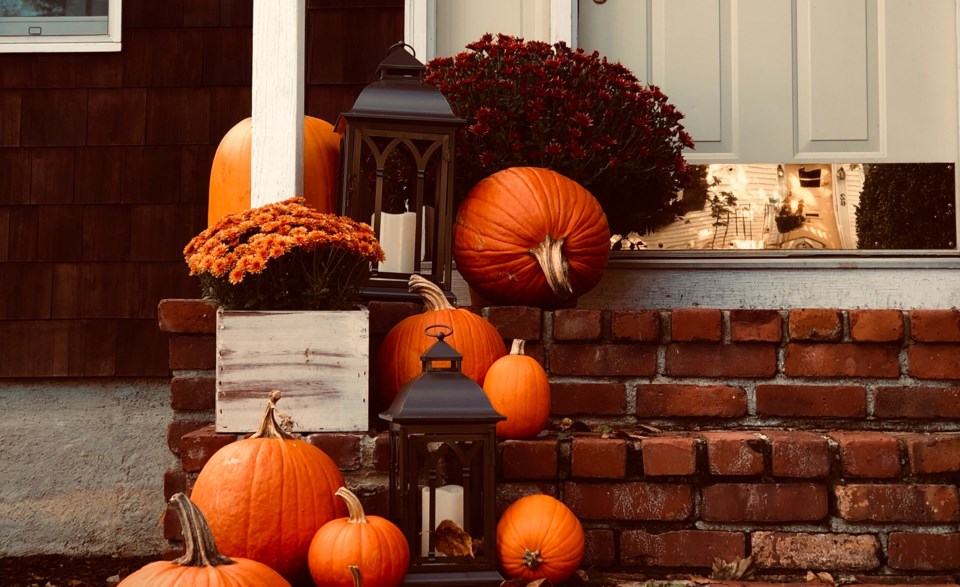As summer blooms fade, fall ushers in a wide array of gorgeous flowers to brighten up your outdoor and indoor spaces. Hanging planters bursting with rich autumn shades like maroon, red, orange, yellow, and gold add stunning natural beauty to your porch, patio, or balcony. Fresh cut bouquets featuring hardy fall flowers can also dress up counter tops and tables indoors.
All blooms thrive differently, according to regional conditions. Therefore, gardening experts at a local nursery or a local horticulturist can offer valuable planting advice.

Here’s a list of popular fall flowers and simple growing tips to help you get started.
Pansies
Many pansies bloom in the fall and continue growing in winter. Scores of eye-catching hybrids deliver a magnificent multicoloured floral display in planters or the garden. The cool-weather wonders grow in small and large flowers, as well as spreading varieties. Fabulous fall colour combinations include burgundy and gold Panola Autumn Blaze pansies, Inspire Purple with Orange, Ruby Mix, and many more.
Better Homes and Garden offers the following growing tips: Plant the flowers early, choose healthy plants, and plant them in a good drainage area. Pansies require fertile soil, steady moisture, and partial sunlight.
Chrysanthemums (Mums)
Mums are classic, versatile fall flowers. The cheery blossoms grow in an array of lovely colours, shapes, and sizes—and are excellent container growers.
Popular autumn hues include orange, yellow, burgundy, bronze, red, purple, and cream. Potted mums look stunning hanging from a porch hook or lining a garden path. Create extra decorative flair by adding miniature pumpkins and gourds to your patio or balcony container.
HGTV offers the following growing tips: Plant mums in organically fertilized or compost-enriched soil. Make sure they get full sun, and water them frequently.
Dahlias
Dahlias offer dazzling blasts of colour from the middle of summer into fall until the first frost. They bloom in lots of delightful forms and various sizes. The tuberous perennials boast delicate leaves. Dahlia types include single, double, waterlily, cactus, pompon, peony-flowered, and dinnerplate dahlias—named for their huge size. The sheer numbers of shapes and colourful blends make dahlias a garden favourite.
Gardener’s Supply Company offers the following growing tips: “Plant dahlia tubers outdoors after your last frost date.” (You can also start them indoors until the frost passes). Plant them in warm, well-drained, composted soil. Taller dahlia types, like dinner plates, require staking. Give dahlias full sun, fertilize them monthly, and water them regularly.
Asters
Often dubbed daisy lookalikes, asters come in hundreds of colourful varieties. The low-maintenance blooms brighten a small space. Because they bloom easily in late summer to the middle of fall, asters make lovely additions to autumn bouquets and container gardens. Breathtaking examples include the Purple Dome New England Aster, Barr’s Pink New England Aster, and September Ruby New England Aster (boasting splendid dark rose pink petals against a yellow centre). All these types attract butterflies.
The Spruce offers the following growing tips: You can start asters in the spring from seeds. However, most start from potted nursery plants. Asters do best in loamy soil in full sun. Keep the soil moist by watering frequently. To help prevent fungus and mildew, water the base of the plant and never the leaves. Also, fertilize bi-monthly from planting until August.
Photo: DebraLee Wiseberg via gettyimages.com
Goldenrod
Goldenrod brings a lush sweep of deep golden blooms to the garden in late summer and early fall. Allergy sufferers mistakenly blame the bountiful plant for itchy eyes and sneezing. However, many sources, including Horticulture Magazine, debunk the claim. Ragweed is the true hay fever irritant.
According to the Chicago Botanic Garden plant guide, more than 100 species of goldenrod exist around the world. The bright, feathery yellow flowers beautify landscapes and gardens. Varieties include clumping “Fireworks” and petite-stemmed "Little Lemons”.
The Spruce offers the following growing tips: Goldenrod flourishes in many kinds of environments. Consult a local nursery to find out which type is best suited for your locale. For robust blooms, give goldenrod full sun. To control spread, plant goldenrod in pots in well-draining soil. Water these drought-resistant plants weekly and stake taller varieties to prevent flopover.
Helenium (Sneezeweed)
Hailing from the daisy family, helenium bursts into life in gorgeous autumnal hues like orange, orange-red, brown, brick-red, and deep mahogany. Many varieties contain petals blotched with multiple colours that surround a rich, chocolate-brown centre. The popular late-season blooms add playful pizzazz to a fall floral arrangement. Bonus: Helenium also repels deer.
Better Homes and Garden offers the following growing tips: Helenium needs full sun, “well-drained, slightly acidic soil,” with weekly watering and more frequently in dry conditions. Support taller plants with stakes and deadhead frequently to promote new flowering.
“Cherokee Sunset” Rudbeckia
Though rudbeckia comes in many vibrant shades, the rich gold and chocolate-brown colouring of the “Cherokee Sunset” variety adds lovely autumnal flair to porch or patio planters, bushy fall bouquets, and your garden. These whimsical blooms are also known as “Black-Eyed Susans.” Some of the flowers’ centre discs are also a stunning deep mahogany.
The Old Farmer’s Almanac offers the following growing tips: Plant rudbeckia in warm soil (70 degrees Fahrenheit or above). Seeds need moist, well-drained soil. Plants grow better in full sun. To promote better growth, don’t let plants get too dry and frequently remove deadheads.
Overall, any of these beautiful fall blooms will keep your garden growing toward a gorgeous new season.




